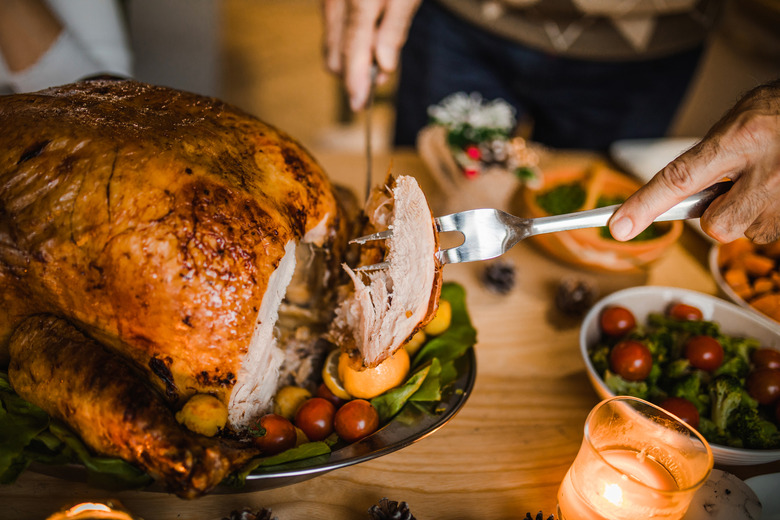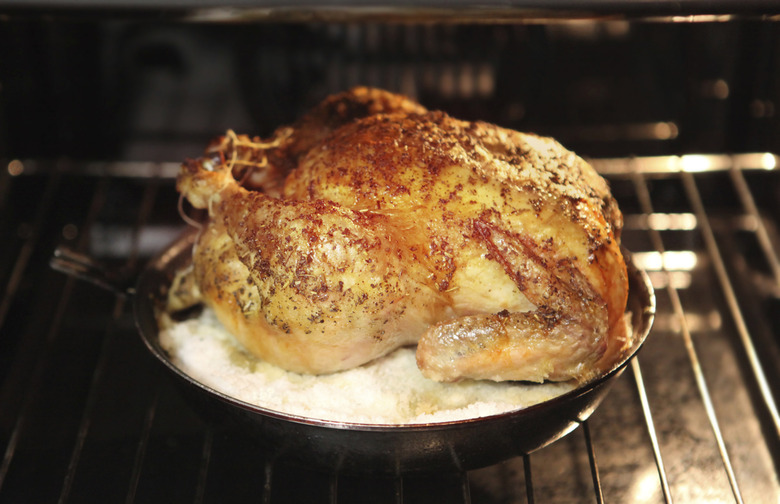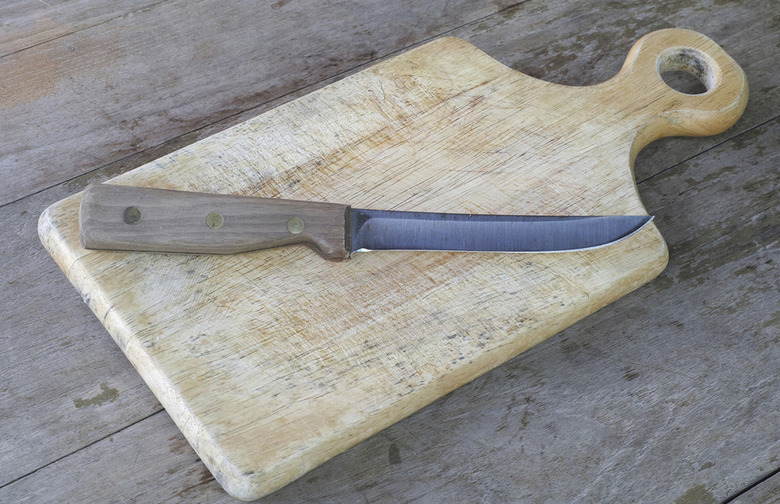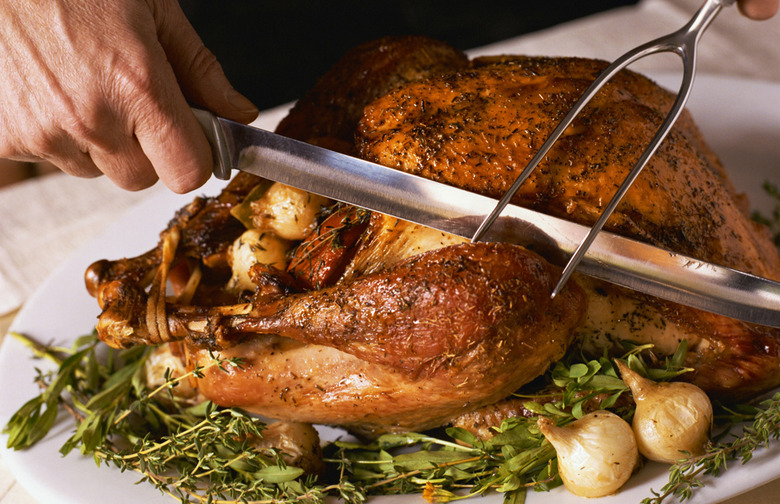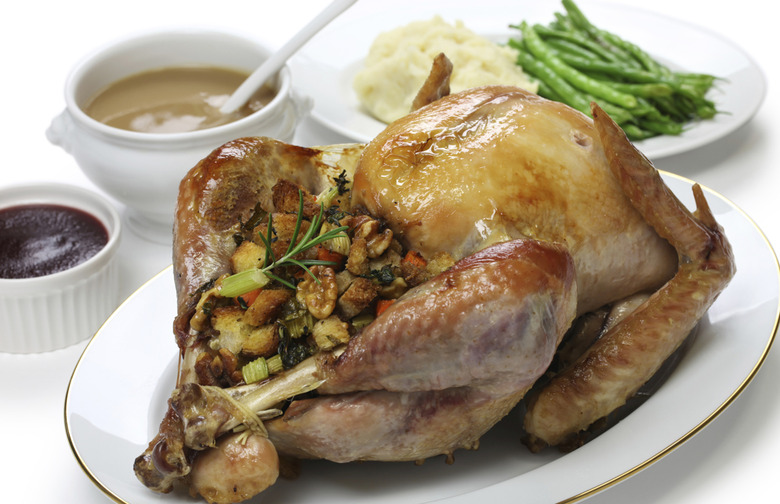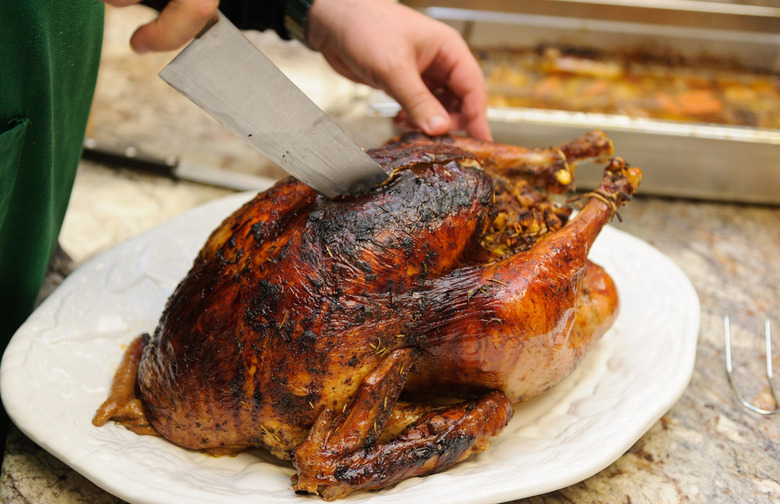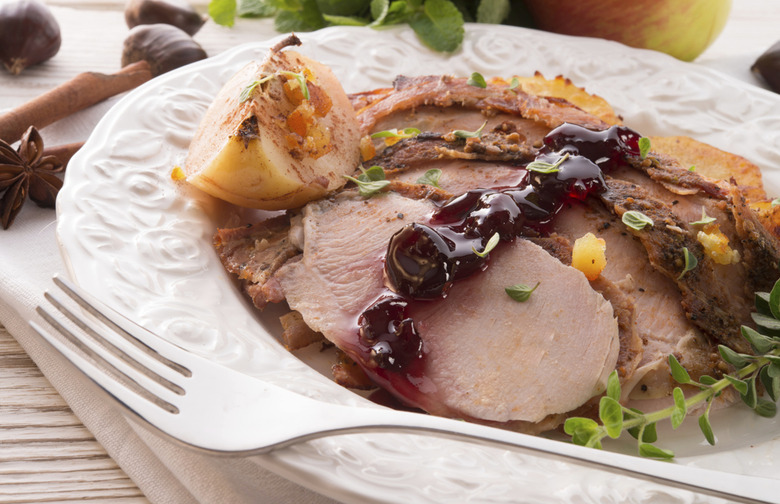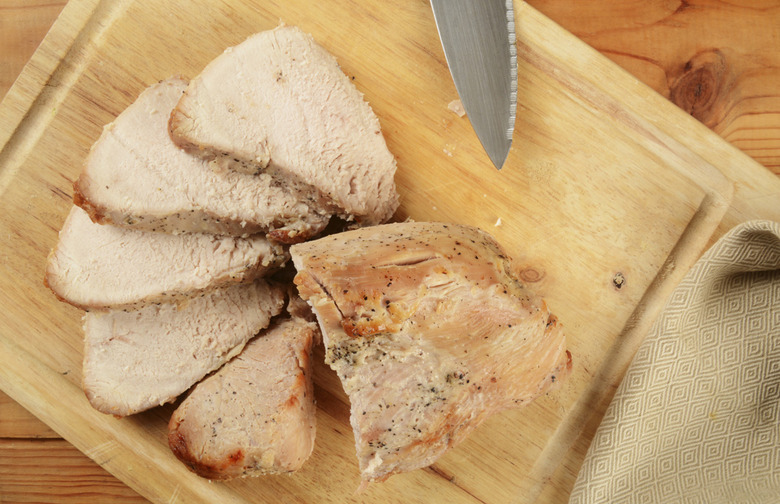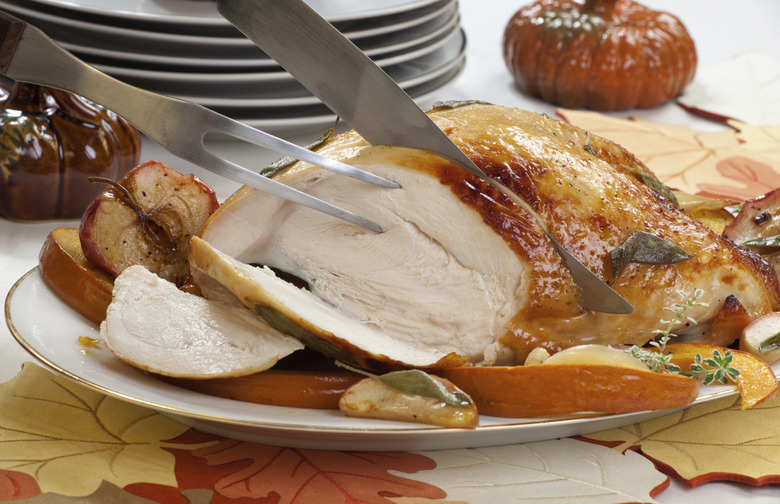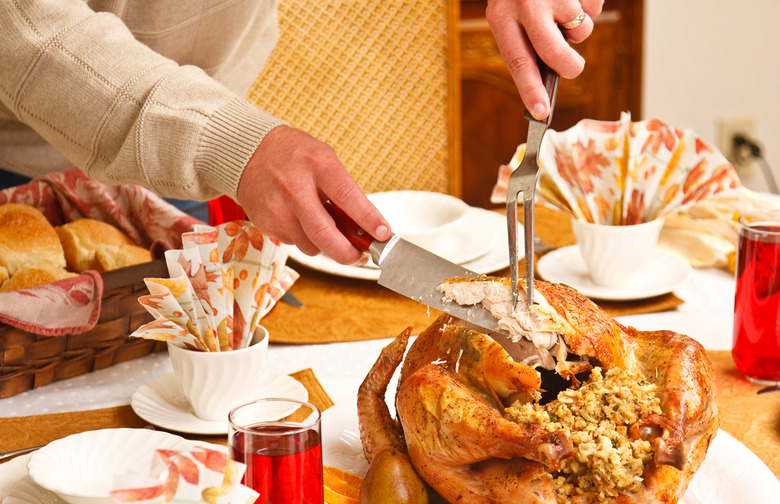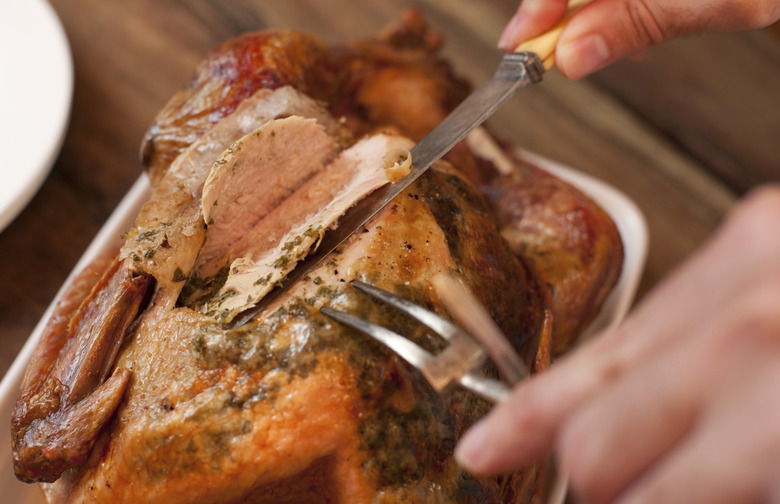How Not To Carve A Turkey: 10 Common Mistakes And How To Avoid Them Gallery
You've labored over your Thanksgiving turkey for days, painstakingly brining, roasting, and basting until finally you've pulled a beautiful golden-brown bird from your oven. You've done everything right so far, but the final step — carving — can turn all your hard work into a scene from a horror film, your gorgeous gobbler shredded into unrecognizable, microscopic pieces of meat.
Carving a turkey doesn't have to be a dreaded task. It really isn't that hard as long as you avoid a few common mistakes. Basically, if you can carve a chicken, you can carve a turkey — and if you can't, you just need a little practice.
Set yourself up for success by arranging your tools. Use a large cutting board, because turkeys are enormous and you don't want your bird hanging off the board and rocking back-and-forth while you are trying to carve it.
Keep your cutting board from slipping by placing a damp towel or paper towels underneath, and have some extra ready-to-grab towels on the side so you can clean up any running juices.
Now that you know how to start, read on to find out how not to carve a turkey.
Not Letting Your Turkey Rest
Your bird isn't ready the moment it leaves the oven; instead, loosely tent your turkey and let it rest for about 20 minutes. Don't worry, with a bird that large, it will still be piping hot when you go to carve it, but the juices will have had time to redistribute, locking in all that flavor and succulence.
Using a Carving Fork
Carving forks damage the skin and don't provide as much grip and stability as your hand will. Skip the extra tool, and use a towel to protect your hand from the hot juices.
Using a Dull Knife
With every knife skill, including carving, a sharp knife is essential. Dull knives will get stuck and shred the meat. The goal when slicing through meat is to use a sweeping and not a sawing motion.
Removing the Stuffing Incorrectly
If you choose to stuff your bird, you will need to remove the stuffing without damaging the meat or tearing the skin before you start carving. Make an oval incision at the neck cavity, and then use a long-handled spoon to scoop the stuffing out of the bird.
Carving More Than You Need
It might seem like a good idea to break down the whole bird while you are at it, but the meat will dry out faster once it's cut, so if you really only need half of the meat for your Thanksgiving dinner, just carve half, and save the rest on the bone for later use in the ultimate Thanksgiving leftover sandwich or for healthy turkey soup recipes.
Removing the Wings First
Many people will start their carving by removing the wings before or after they remove the legs to get them out of the way before they start carving the breast meat. Just don't — the wings help stabilize the bird while you remove the breast meat. Remove the wings last.
Not Slicing the Thigh Meat
The thigh meat is tucked in behind the leg, so the skin is usually soggy. Luckily, while the skin isn't the delicious crackling skin you find on the breast meat, if cooked to 165 degrees Fahrenheit, the meat will be incredibly juicy. Remove any unappetizing skin and cut the meat into larger chunks so your guests can enjoy this cut better.
Not Removing the Breast Meat From the Bone Before Slicing
Slicing the breast meat on the bone is done often, but it shouldn't be. Instead, remove the whole breast in one piece to keep the crisped skin intact and to make slicing the breast meat widthwise easier. To do this, start at the center and cut straight down along the cartilage, then use the rib cage as a guide to free the meat from the bones.
Slicing the Breast Meat Against the Grain
This mistake is especially common when trying to slice the breast meat on the bone. Slice the meat in medallions by cutting straight down widthwise. This will ensure even pieces that will arrange beautifully on a platter.
Serving Your Meat on a Cold Platter
A cold or room temperature platter will cool off your food that much faster, so as a rule of thumb, just serve hot food on a hot plate and cold food on cold plates —that's just one of the important restaurant secrets every home cook should know.
More from the Daily Meal:
How to Prep for Your Easiest Thanksgiving Yet
Make-Ahead Dishes You Need This Thanksgiving
